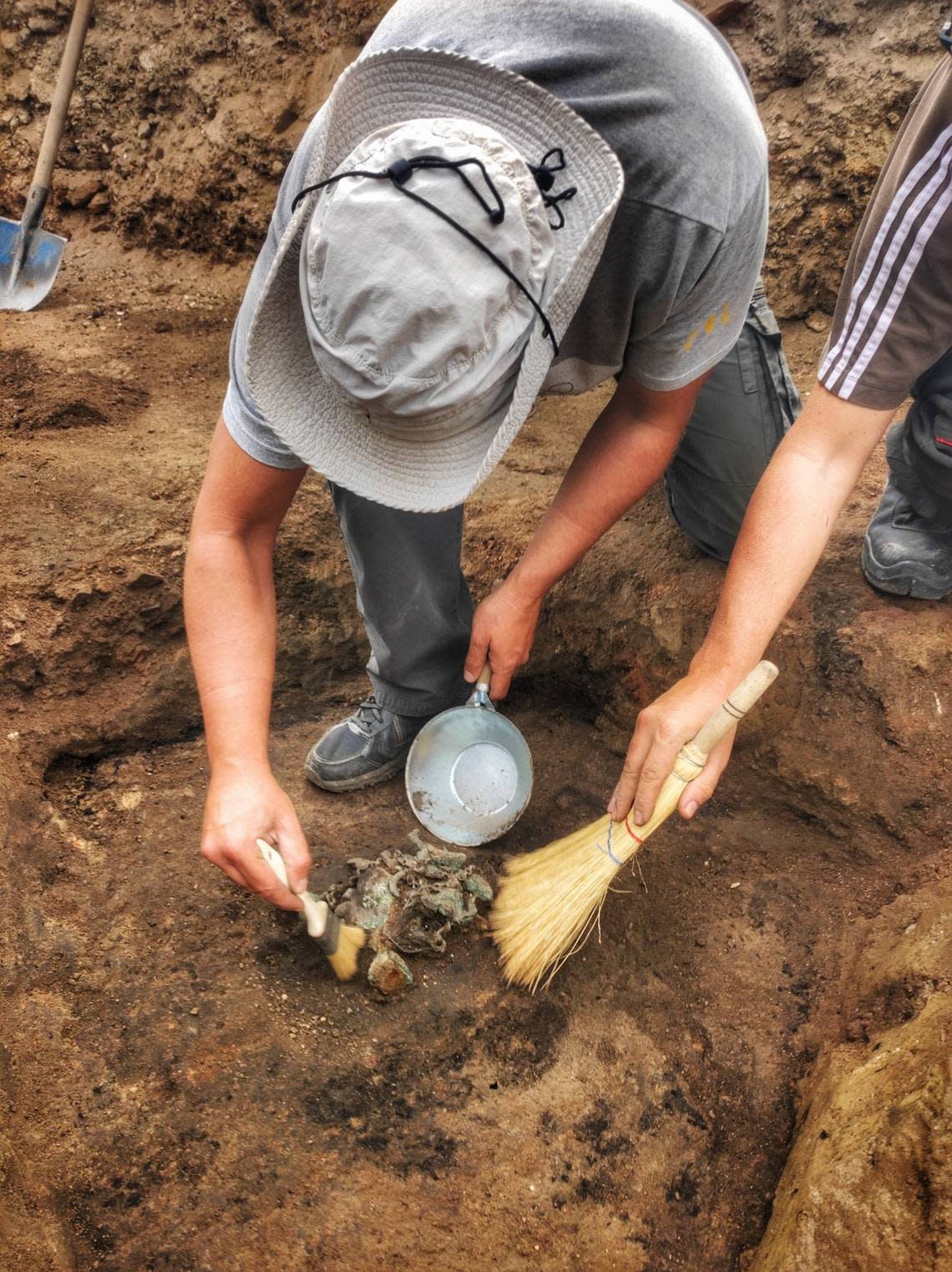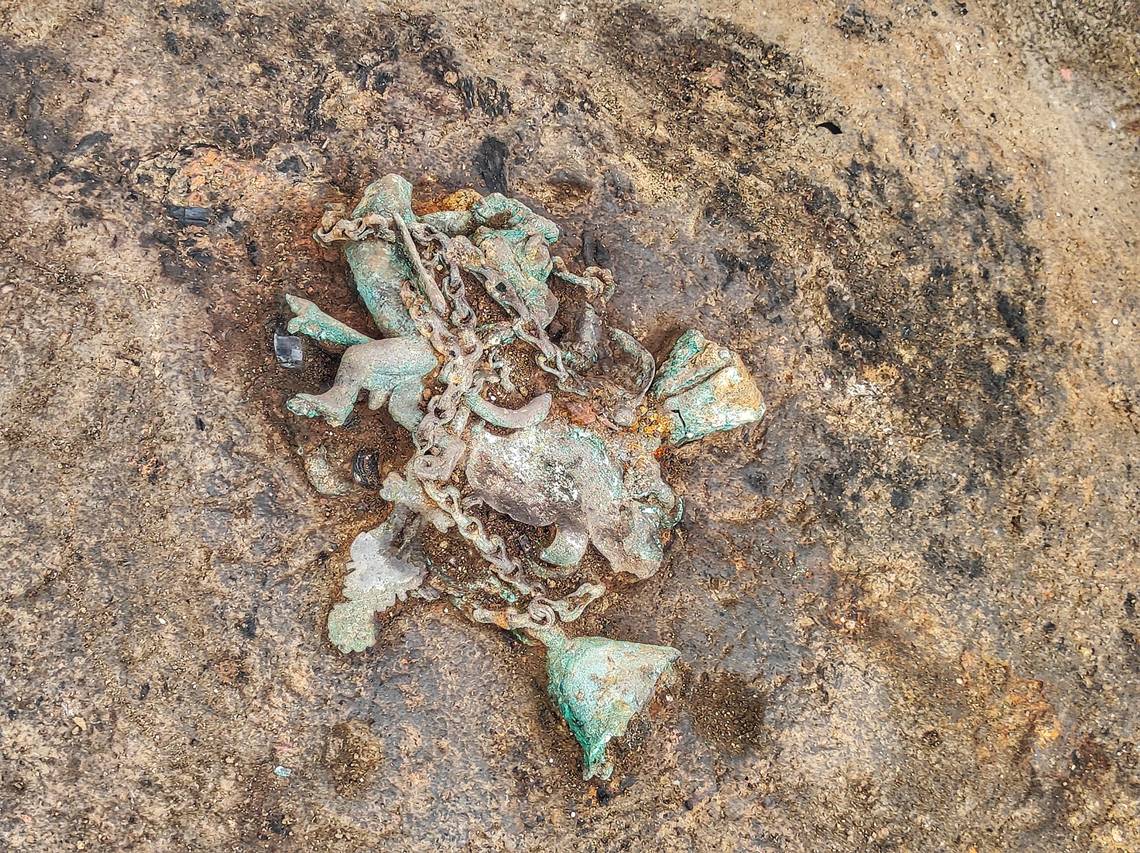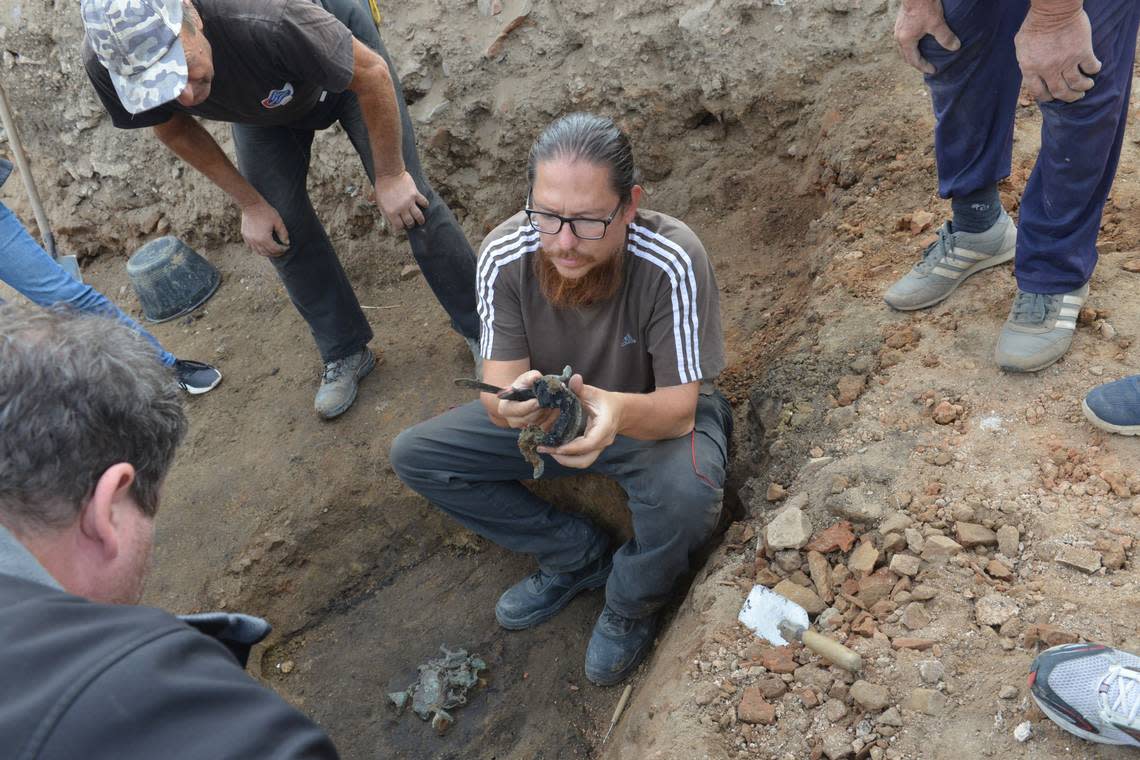‘Magical’ Roman wind chime — shaped like a phallus — unearthed in Serbia, photos show
While excavating the ruins of an ancient Roman city in Serbia, archaeologists unearthed a “magical” artifact: wind chimes shaped like a phallus.
Photos show the “unique” artifact once used for protection.
Located along the Danube River, the ancient city of Viminacium began as a camp for the Roman military at the empire’s frontier. The camp was founded in the first century A.D. and soon flourished into a city, Ilija Danković, an archaeologist with the Institute of Archaeology in Belgrade, told McClatchy News on Nov. 16 via email.
This fall archaeologists began excavating one of Viminacium’s main streets and nearby buildings, Danković said. On the porch of a ruined building, they uncovered a set of wind chimes shaped like a phallus.
Archaeologists identified the artifact as a 1,800-year-old tintinnabulum.

Tintinnabulum “can be described as wind chimes, but they also had layered symbolics attributed to them, and they had an important magical role,” Danković said. “The best way to describe them is as amulets intended to protect the home.”
In an ancient culture where phalluses symbolized protection, most tintinnabulum take the form of a fascinum, “a fantastic being in the form of a winged phallus with legs, a phallus of its own, and even a phallic tail,” he said.
The idea of a fascinum was that “more phalluses (equaled) more protection,” Danković explained.
Ancient Romans used tintinnabulum as a way to protect against the “evil or jealous eye,” he said.

Photos show the tintinnabulum found in Viminacium. It appears bunched together, making the overall design harder to identify. A phallus with legs and possibly a tail is visible on the upper left-hand side of the bundle.
Several chains and some bell-shaped pieces are also visible in the photos.
Preliminary X-rays of the tintinnabulum show that it has “unique” elements unlike other known tintinnabula, Danković said.
The tintinnabulum was sent to Belgrade for conservation and further analysis “due to its fragility and importance,” Danković said.

Archaeologists also found pottery for wine, burnt peach pits and a glass jar for olive oil in the ruins.
Viminacium is about 55 miles east of Belgrade.
1,800-year-old wooden phallus found in UK may have been a Roman ‘sex toy,’ study says
Metal detectorist finds 2,000-year-old figurine with eye-catching ‘oversized’ body part
Stone penis found in medieval Spanish ruins had a violent purpose, experts say
